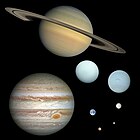- A fire in a residential building in Mangaf, south of Kuwait City, kills fifty people.
- A plane crash near Chikangawa, Malawi, kills nine people, including Vice President Saulos Chilima.
- In tennis, Iga Świątek wins the women's singles and Carlos Alcaraz wins the men's singles titles at the French Open (both pictured).
- In the Indian general election, the National Democratic Alliance, led by Prime Minister Narendra Modi, is re-elected with a reduced majority.
- 1898 – The Cadaver Tomb of René of Chalon (pictured) in Bar-le-Duc, France, was designated a monument historique.
- 1958 – English composer Benjamin Britten's one-act opera Noye's Fludde was premiered at the Aldeburgh Festival.
- 1981 – The Lockheed F-117 Nighthawk, the first operational aircraft to be designed around stealth technology, made its maiden flight.
- 1994 – The Troubles: Ulster Volunteer Force members attacked a crowded bar in Loughinisland, Northern Ireland, with assault rifles, killing six people.
- 2009 – The Lunar Reconnaissance Orbiter, NASA's first mission to the Moon in more than ten years, was launched from Cape Canaveral, Florida.
- Rogier van der Weyden ( d. 1464)
- Ambrose Philips ( d. 1749)
- Lou Brock ( b. 1939)
- Stephanie Kwolek ( d. 2014)
A planet is a large, rounded astronomical body that is neither a star nor a stellar remnant. The Solar System has eight (pictured): four terrestrial planets, Mercury, Venus, Earth and Mars; and four giant planets, Jupiter, Saturn, Uranus and Neptune. The term "planet" at first included the Sun, Moon and the five naked-eye planets that move across the background of the stars; they were seen as having associations with the gods. Copernicus theorized the Earth was a planet and, like the others, orbited the Sun. "Planet" came to include many objects, such as moons, within and beyond the Solar System. The International Astronomical Union in 2006 defined a planet in the Solar System to have cleared its neighborhood of other bodies, and that extrasolar planets should orbit stars and not be large enough to support deuterium fusion. Many planetary scientists, though, still apply the word "planet" more broadly, including dwarf planets, planetary-mass moons, rogue planets and brown dwarfs. ( Full article...)


|
The copper sunbird (Cinnyris cupreus) is a species of passerine bird in the family Nectariniidae. It is native to tropical Africa, its range extending from Senegal and Guinea in the west to South Sudan and Kenya in the east, and southwards to Angola, Zambia, Zimbabwe and Mozambique. It feeds on nectar that it extracts from selected flowers, such as Calliandra spp., Leonotis leonurus, Syzygium spp., and Senegalia polyacantha. It also takes fruits, spiders and insects, some of which are caught while in flight. This female copper sunbird of the subspecies C. c. cupreus was photographed in a Persian silk tree in Kakum National Park, Ghana. Photograph credit: Charles J. Sharp
Recently featured:
|
Architecture • Fashion • Film • Literature • Music • Opera • Philosophy • Poetry • Speculative fiction • Television • Theatre • Visual arts • Writing
Africa • Asia • Africa • Central America • Europe • Latin America • North America • Oceania • Countries • Islands • Mountains • Rivers
Animals • Amphibians and Reptiles • Arthropods • Birds • Ecology • Environment • Fungi • Geophysics • Insects • Mammals • Marine life • Minerals • Plants • Viruses • Weather
Drink • Food • Games • Gardening • Holidays • Martial arts • Scouting • Sports • Toys • Underwater diving • Video games
This Wikipedia is written in English. Many other Wikipedias are available; some of the largest are listed below.
-
1,000,000+ articles
-
250,000+ articles
-
50,000+ articles
Wikipedia is written by volunteer editors and hosted by the Wikimedia Foundation, a non-profit organization that also hosts a range of other volunteer projects:
-
Commons
Free media repository -
MediaWiki
Wiki software development -
Meta-Wiki
Wikimedia project coordination -
Wikibooks
Free textbooks and manuals -
Wikidata
Free knowledge base -
Wikinews
Free-content news -
Wikiquote
Collection of quotations -
Wikisource
Free-content library -
Wikispecies
Directory of species -
Wikiversity
Free learning tools -
Wikivoyage
Free travel guide -
Wiktionary
Dictionary and thesaurus
- A fire in a residential building in Mangaf, south of Kuwait City, kills fifty people.
- A plane crash near Chikangawa, Malawi, kills nine people, including Vice President Saulos Chilima.
- In tennis, Iga Świątek wins the women's singles and Carlos Alcaraz wins the men's singles titles at the French Open (both pictured).
- In the Indian general election, the National Democratic Alliance, led by Prime Minister Narendra Modi, is re-elected with a reduced majority.
- 1898 – The Cadaver Tomb of René of Chalon (pictured) in Bar-le-Duc, France, was designated a monument historique.
- 1958 – English composer Benjamin Britten's one-act opera Noye's Fludde was premiered at the Aldeburgh Festival.
- 1981 – The Lockheed F-117 Nighthawk, the first operational aircraft to be designed around stealth technology, made its maiden flight.
- 1994 – The Troubles: Ulster Volunteer Force members attacked a crowded bar in Loughinisland, Northern Ireland, with assault rifles, killing six people.
- 2009 – The Lunar Reconnaissance Orbiter, NASA's first mission to the Moon in more than ten years, was launched from Cape Canaveral, Florida.
- Rogier van der Weyden ( d. 1464)
- Ambrose Philips ( d. 1749)
- Lou Brock ( b. 1939)
- Stephanie Kwolek ( d. 2014)
A planet is a large, rounded astronomical body that is neither a star nor a stellar remnant. The Solar System has eight (pictured): four terrestrial planets, Mercury, Venus, Earth and Mars; and four giant planets, Jupiter, Saturn, Uranus and Neptune. The term "planet" at first included the Sun, Moon and the five naked-eye planets that move across the background of the stars; they were seen as having associations with the gods. Copernicus theorized the Earth was a planet and, like the others, orbited the Sun. "Planet" came to include many objects, such as moons, within and beyond the Solar System. The International Astronomical Union in 2006 defined a planet in the Solar System to have cleared its neighborhood of other bodies, and that extrasolar planets should orbit stars and not be large enough to support deuterium fusion. Many planetary scientists, though, still apply the word "planet" more broadly, including dwarf planets, planetary-mass moons, rogue planets and brown dwarfs. ( Full article...)


|
The copper sunbird (Cinnyris cupreus) is a species of passerine bird in the family Nectariniidae. It is native to tropical Africa, its range extending from Senegal and Guinea in the west to South Sudan and Kenya in the east, and southwards to Angola, Zambia, Zimbabwe and Mozambique. It feeds on nectar that it extracts from selected flowers, such as Calliandra spp., Leonotis leonurus, Syzygium spp., and Senegalia polyacantha. It also takes fruits, spiders and insects, some of which are caught while in flight. This female copper sunbird of the subspecies C. c. cupreus was photographed in a Persian silk tree in Kakum National Park, Ghana. Photograph credit: Charles J. Sharp
Recently featured:
|
Architecture • Fashion • Film • Literature • Music • Opera • Philosophy • Poetry • Speculative fiction • Television • Theatre • Visual arts • Writing
Africa • Asia • Africa • Central America • Europe • Latin America • North America • Oceania • Countries • Islands • Mountains • Rivers
Animals • Amphibians and Reptiles • Arthropods • Birds • Ecology • Environment • Fungi • Geophysics • Insects • Mammals • Marine life • Minerals • Plants • Viruses • Weather
Drink • Food • Games • Gardening • Holidays • Martial arts • Scouting • Sports • Toys • Underwater diving • Video games
This Wikipedia is written in English. Many other Wikipedias are available; some of the largest are listed below.
-
1,000,000+ articles
-
250,000+ articles
-
50,000+ articles
Wikipedia is written by volunteer editors and hosted by the Wikimedia Foundation, a non-profit organization that also hosts a range of other volunteer projects:
-
Commons
Free media repository -
MediaWiki
Wiki software development -
Meta-Wiki
Wikimedia project coordination -
Wikibooks
Free textbooks and manuals -
Wikidata
Free knowledge base -
Wikinews
Free-content news -
Wikiquote
Collection of quotations -
Wikisource
Free-content library -
Wikispecies
Directory of species -
Wikiversity
Free learning tools -
Wikivoyage
Free travel guide -
Wiktionary
Dictionary and thesaurus




